Every building, structure and building structure needs protection from moisture or harmful effects from corrosive liquids. Insulation is also required indoors with high humidity. The methods and materials with which this can be done are varied. What materials are there? How to choose the right one? What to look for? A review from the editors of the site "bestx.htgetrid.com/en/" will answer these questions. We've also prepared a ranking of the best waterproofing products for 2020.
Content
Material classification
All materials are divided into 2 large groups:
- For the protection of facades.
- For interior decoration.
Interior finishing involves the insulation of surfaces inside the premises in those places where contact with water is possible. External means protecting the facade, plinths and roof.
Waterproof materials are made on the basis of:
- rubber;
- tar;
- polymers;
- minerals;
- bitumen.
There are also all kinds of dry mixes for penetrating insulation on sale.
For each part of the building (roof, walls, foundation, etc.) and under different conditions, a different type of waterproofing material is used.
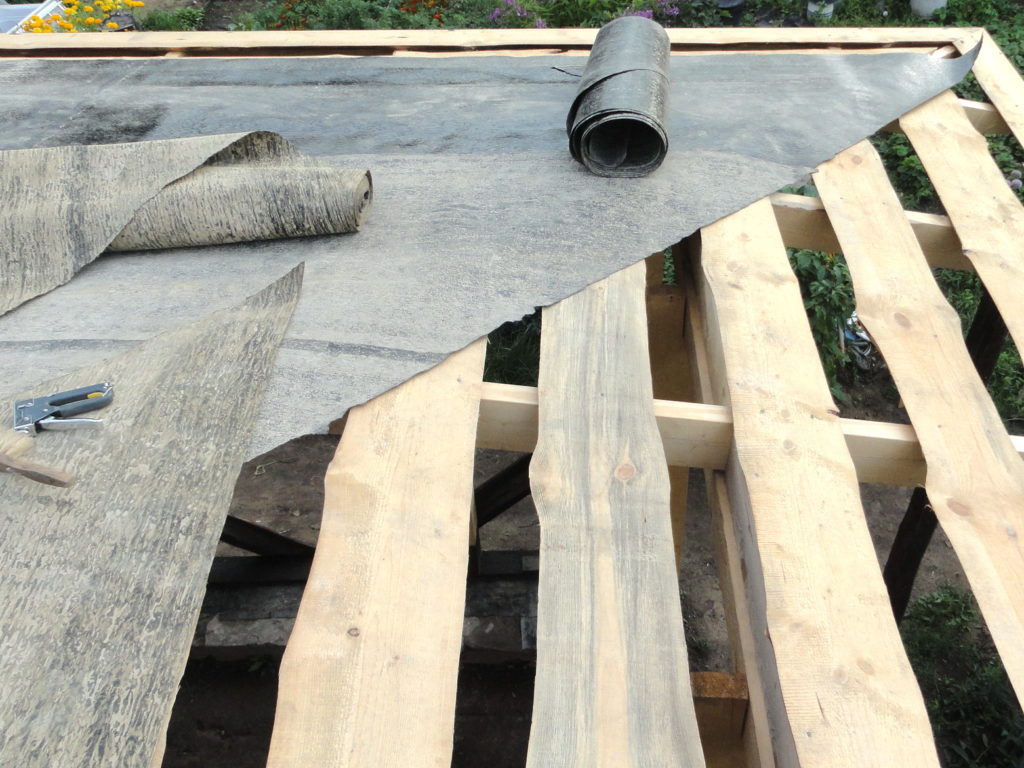
Main characteristics
Criteria for choosing a waterproofing material:
| № | Characteristic | Explanation |
|---|---|---|
| 1 | Material elasticity | An important characteristic when covering corners, joints and abutments. The material must be flexible enough to cover the surface evenly. |
| 2 | Mechanical strength | Responsible for protecting the material from loads during construction and operation. |
| 3 | Hygroscopicity | Upon contact with water, the material does not change its properties and structure. |
| 4 | Resistant to UV and other weather conditions | The special substances included in the composition prevent the harmful effects of the environment. |
| 5 | Compliance with the temperature range of application for the climatic zone | The temperature range should be well matched to the climatic zone. |
| 6 | Vapor permeability | Thanks to modern waterproofing materials, it is possible to remove condensate without passing moisture from outside. Such protection is especially important for wooden structures. |
In order not to be mistaken when choosing, it is important to consider each parameter.
Application methods
Anti-filtration insulation is a comprehensive protection of underground and underwater structures, as well as their elements. It protects against 3 types of exposure:
- Wrapping.
- Water pressure head.
- Capillary effect.
Anti-filtration insulation is used for moisture protection of basements, shafts, caissons, pools, dams, canals, sluices and other structures. Below are the most common waterproofing methods.
Coating
One of the most common methods of moisture isolation.This technique is used both for external work (to protect the house and structures from capillary moisture) and internal (for example, when waterproofing basements). Apply compositions based on bituminous mastics or cement mortars.
The product is applied in 2 or more thick layers, while the thickness of the coating should be between 2 mm and 1 cm.
The advantages of coating bitumen moisture insulation are a high degree of protection against moisture, a good indicator of elasticity, an affordable price and ease of implementation. Among the disadvantages: fragility (at zero temperature, the coating becomes brittle, as a result of which its destruction occurs - such a coating protects for no more than 6 years), fire hazard of work (high heating temperature of bitumen).
In this regard, recently, mastics with the addition of rubber and polymers are gaining popularity, which improve the properties of materials.
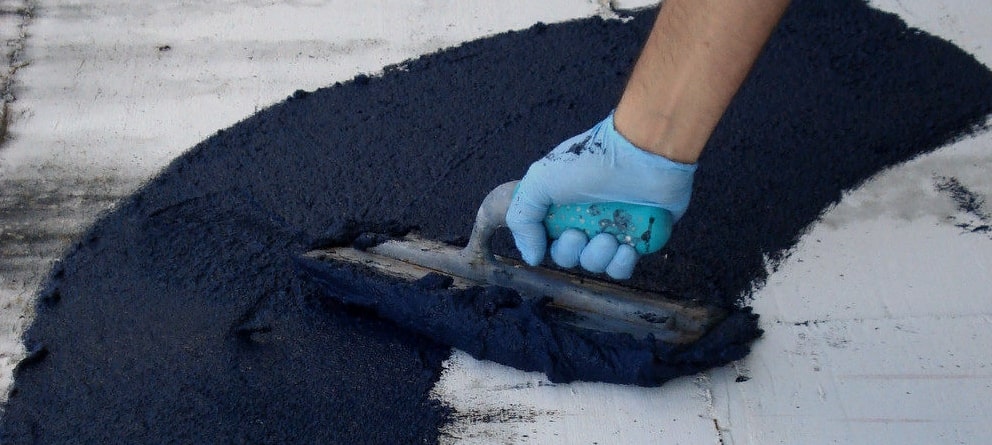
Mastics, sealants and bitumen are toxic, so they can only be used on a dry base.
Lubricating moisture insulation using cement mortars also has excellent moisture-protective properties. A striking representative is the two-component polymer modified cement mortar sika top 109. After hardening, the coating retains its elasticity and flexibility. Such a composition is used for moisture protection of foundations, stone and reinforced concrete structures, internal and external protection of pools and other reservoirs. In addition, it is used as a primer for protective elastic coatings.
Oleechny
This type of work involves the use of roll or sheet materials that are glued in several layers using bitumen mastics or synthetic resins.
Materials consist of several components:
- adhesive base, which simplifies the procedure for attaching the material due to its location on the frame (this layer is optional, but it is often found);
- a substrate made of cardboard, polymeric materials, etc., is a frame for applying a protective layer;
- a waterproofing layer on top contributes to moisture protection.

The easiest way to make such insulation is on horizontal surfaces. This method of insulation is suitable for protecting concrete and other types of surfaces.
The curtain should be installed with an overlap of 10 cm to avoid overlapping joints of adjacent elements and subsequent leakage.
Dyeing
Paint-type waterproofing forms a membrane that does not allow porous building materials to absorb moisture. Most often, these are emulsions based on polymer, polymer-cement, epoxy resins or bituminous mastics. Components that improve their properties are often added to the composition. Waterproofing by painting is done with a brush, roller or spray gun. This method is used for interior and exterior decoration.
Bituminous mastics are applied in 2-3 layers, each of which should be at least 2 mm. For synthetic compounds, 1-2 layers of 1 mm thick are sufficient.
In terms of composition, waterproofing paints can be divided into:
- bituminous (emulsions with the addition of bitumen and auxiliary agents);
- polymer (consisting of synthetic resins, rubber-resin mixtures, paint and varnish components);
- bitumen-polymer (based on bitumen and various synthetic polymers);
- polymer-cement (based on polymer-cement compositions, water glass, Portland cement and other similar materials);
- tar-epoxy (thixotropic two-component tar-epoxy resins).

The painting method is used both for external protection of building structures (covering cracks in walls, foundations) and for interior decoration. Moisture accumulates under the tiles and in the places where pipes pass, as a result of which mold appears, and building materials are gradually destroyed.
Waterproofing the walls and floors in bathrooms in case of flooding prevents water from leaking to the lower floors.
Waterproofing plaster
This type of moisture protection is designed to prepare surfaces with a high level of humidity for finishing.These include primarily basements, foundations, basements and exterior walls of houses.
According to their composition, moisture-proof plasters are divided into 2 types:
- Asphalt.
- Cement-sand.
The latter are relatively inexpensive. You can even make them yourself, and the coating procedure itself is similar to ordinary plastering.

Cement plastering is applied in several layers (from 5 to 40 mm.)
Asphalt plasters are more often used in industry. They are not so budgetary, and special equipment is needed to work with them. Asphalt plaster is used in cold and hot (heating up to 180 degrees Celsius) methods.
Asphalt plasters must be laid in 2-3 layers, each layer from 2 to 4 mm.
Penetrating
This method is considered the most popular and effective. The functionality consists in the penetration of the moisture-protective composition into the structure of the material to a depth of 20 cm. Thus, the waterproofing layer displaces moisture, filling all possible pores and microcracks.
Advantages of a penetrating moisture protection method:
- giving additional strength to concrete structures;
- simultaneous repair of all existing cracks;
- no need for a primer and a protective layer;
- increased resistance to low temperatures;
- formation of a sealed and seamless coating.
They use penetrating waterproofing for moisture protection of foundations of different heights, basements against groundwater, pools and other water tanks, bathrooms, baths and underground structures.
The best penetrating mixtures:
- Penetrol.
- Osmosil.
- Hydrotex.
- Hydrochitis.
- Akveton.
- Crystallizol.
- Sprayed
Waterproofing of this type is carried out using a spray gun. Acrylic, bituminous and polyurethane compositions are used as sprayed products. Such protection resists not only moisture, but also the effects of more aggressive substances.
After application, the moisture-proof mixture hardens, forming a durable protective layer with pronounced anti-slip properties. Such waterproofing is durable - protection lasts up to 50 years.
This method is used to protect basements, swimming pools, foundations and roofing works.

Injectable
It is used in construction when it is necessary to introduce an insulating compound into cracks, seams and pores, as well as during repairs. As a rule, the injection method is used along with other types of waterproofing to further strengthen hard-to-reach places.
Resins are used as moisture-protective compositions based on:
- polyurethanes;
- silicates;
- acrylates.
Cement and special emulsions are also used.
Zasypny
It is aimed at protecting the structural parts of the building from water penetration using free-flowing mixtures. When interacting with water, a dense moisture-proof protective layer is formed.
This type of insulation is used to fill any cavities in the foundation, floors and walls. The advantages are high thermal insulation characteristics and durability.
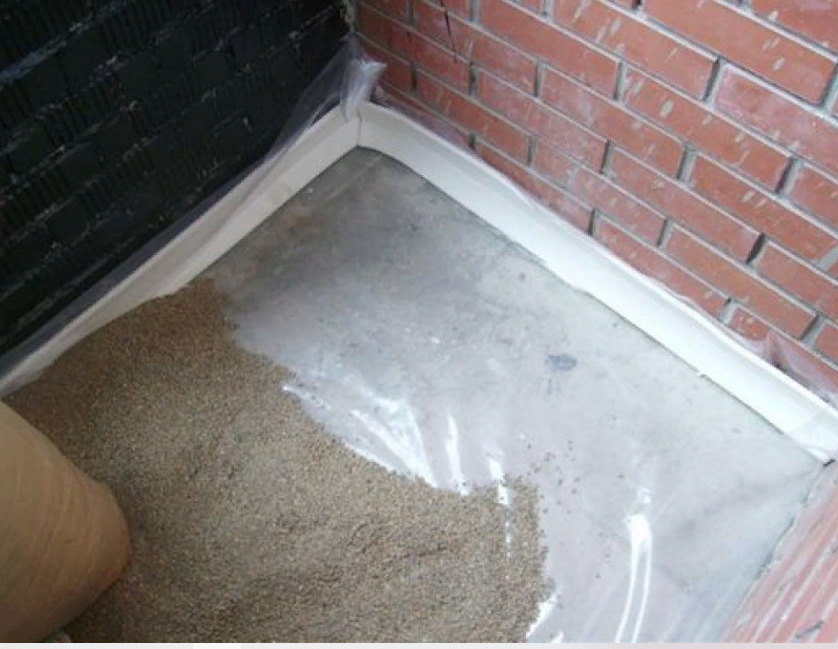
The disadvantages include:
- high cost;
- settling over time;
- the complexity of installation.
The composition of free-flowing mixtures contains bentonite, mineral wool, ash and perlite sand.
Rating of the best waterproofing products for 2020
Below is a rating of quality materials from the best manufacturers, which was compiled based on the opinions of buyers. For convenience, we have divided the top moisture protection products by purpose.
For swimming pools
BauLab Pro K1

It is a one-component, water-dispersion-based rubber moisture-proof material that does not contain solvents. It is suitable for external and internal use. The mixture forms a seamless layer of moisture resistant waterproofing membrane. It does not adhere to polyethylene and silicone materials. Drying time at 20 ° C is about 24 hours.
Estimated price: 750 rubles / 1 kg.
Advantages:
- readiness for use;
- resistance to chlorinated water and alkali;
- possibility of waterproofing in the underfloor heating system up to 80 ° C;
- high elasticity;
- resistance to temperature extremes.
Disadvantages:
- not detected.
Penetron penetrating waterproofing

This dry mix comes in a plastic bucket with a comfortable handle. It is used for surfaces with pores and cracks with an opening width of no more than 0.4 mm, and also has the property of "curing". The composition is used for moisture insulation of concrete and reinforced concrete structures. It protects the coating from the effects of aggressive media: ultraviolet radiation, acids, alkalis, oil products, sewage, groundwater, etc.
Price reference: 3500 rubles / 10 kg.
Advantages:
- simplicity and ease of use;
- vapor permeability;
- application for systems with drinking water;
- as part of antibacterial additives;
- not subject to mechanical wear.
Disadvantages:
- high consumption per unit area.
For bathrooms
Hidroflex, Litokol

It is a ready-to-use water-based coating waterproofing. It is used for moisture protection in showers and bathrooms, hammams and other similar rooms. The product is applied with a brush, spatula or roller. The mastic is applied in 2 layers. Average consumption: 1.3 kg / sq.m. Dries up in 2 hours.
Average price: 3100 rubles / 10 kg.
Advantages:
- readiness for use;
- lack of unpleasant odor;
- non-toxic;
- dries quickly.
Disadvantages:
- not detected.
Waterproofing coating Respect
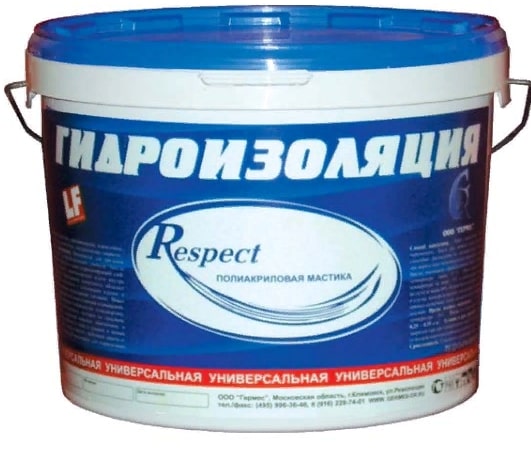
This composition is used to impart moisture-proof properties to substrates. Polyacrylic mastic is applied in 2 layers, average consumption: 0.25-0.35 kg / m2. Work in direct sunlight, atmospheric precipitation or in strong winds is unacceptable. The mastic dries completely 24 hours after application at a temperature of 25 ° C.
Estimated price: 850 rubles / 5 kg.
Advantages:
- reducing the likelihood of mold formation;
- ease of application;
- lack of strong odor;
- good adhesion to tile adhesives;
- convenient packaging, release form and packing.
Disadvantages:
- according to customer reviews, it dries longer than stated by the manufacturer in the description.
For roofing
Mariseal 250 polyurethane sealant

It is a one-piece membrane with good quality and durability. It is resistant to mechanical, thermal, chemical, ultraviolet and atmospheric influences. The mastic provides additional thermal insulation due to the high rate of reflection of sunlight. The composition prevents the penetration of roots - suitable for green roofs. In case of damage, the membrane is subject to quick local repair.
Average price: 4000 rubles / 6 kg.
Advantages:
- high vapor permeability;
- wide range of operating temperatures (from -40 ° C to + 90 ° C);
- resistance to synthetic agents;
- the ability to carry out work at negative temperatures (up to -10 ° C);
- low consumption.
Disadvantages:
- not detected.
ROCKWOOL roof waterproofing (70 sq.m.)

This is a waterproofing film of the well-known company ROCKWOOL, which is designed to protect insulation and structures from moisture penetration, the formation of under-roof condensation and wind. Suitable for all types of roofing.
Estimated price: 2500 rubles / 70 sq.m.
Advantages:
- two-layer structure;
- versatility (vapor barrier - from the inside, hydro barrier - outside);
- simplicity and speed of work (fastening with a construction stapler, ordinary double-sided tape);
- clear markings along the entire length of the roll - it is convenient to measure the desired length;
- temperature range of application is from -40 ° С to + 80 ° С.
Disadvantages:
- low vapor permeability;
- difficult to find on sale.
For basements
Waterproofing penetrating Aquastop Pro

The composition is used for moisture insulation of basements, basements, terraces and rooms with high humidity.The solution is viable in a container for 60 minutes, the mixture is diluted in a ratio of 0.18-0.20 kg / l. It is recommended to apply at temperatures from + 5 ° C to + 30 ° C, and operation is possible at temperatures from -50 ° C to + 70 ° C.
Average price: 1500 rubles / 10 kg.
Advantages:
- wide scope;
- wide range of operating temperatures;
- environmental friendliness;
- protection against the effects of aggressive environments;
- with the function of "self-healing".
Disadvantages:
- it is important to follow the instructions exactly when mixing the mixture with water.
Liquid waterproofing AKTERM HydroStop

This liquid moisture protection product comes in a 20L plastic bucket. Mastic is a water-based polymer liquid rubber ready for use. Differs in high elasticity, which remains even at low temperatures. Application by roller, airless spray or brush is recommended.
Estimated price: 3800 rubles / 10 kg.
Advantages:
- the possibility of tinting in basic colors;
- high adhesion to various surfaces;
- ease of application, which does not require special skills;
- high quality materials;
- does not crack at low temperatures.
Disadvantages:
- not detected.
For the foundation
Rolled insulation TechnoNikol
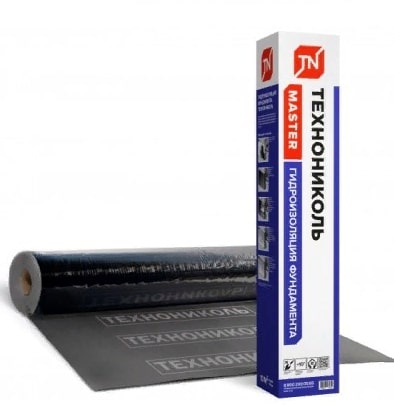
It is a baseless self-adhesive material with a total area of 10 sq.m. (length 10 m, width 1 m) and a thickness of 1.5 mm. Roll weight is 15 kg. Used for moisture protection of foundations up to 3 m. Has no basis. The bitumen-polymer mixture is of high quality, due to which good indicators of flexibility and relative elongation of the material are expressed.
Average price: 1600 rubles / 10 sq.m.
Advantages:
- fast and convenient installation;
- durability;
- detailed instructions;
- reliable protection against moisture;
- work safety.
Disadvantages:
- not detected.
ECOROOM polyurethane waterproofing

This material is based on a pure hydrophobic polyurethane elastomer resin. As an additive, a special complex of fillers was used that form a moisture barrier. There are 2 types of packaging: 10 and 20 kg. Full polymerization of the mastic is achieved 7 days after application. The operating temperature range varies from -40 ° C to + 80 ° C.
Estimated price: 6600 rubles / 20 kg.
Advantages:
- preservation of elasticity up to -40 ° C;
- high resistance to chemical compounds;
- environmental safety (after the end of polymerization);
- convenience of work - ready-made composition;
- good hydrophobicity of the coating.
Disadvantages:
- not detected.
Conclusion
To choose which waterproofing material is better to buy, you need to decide on which surface you plan to apply, as well as in what conditions and method. It is also necessary to calculate how much the required amount of material costs. Before buying, you should consult with a specialist and listen to his recommendations. It is also useful to read reviews and order goods in the online store.
If you have used any moisture-proof materials from those given in our article or you have experience with other formulations and you can advise which companies are better and where it is more profitable to buy, we are waiting for your advice in the comments.












